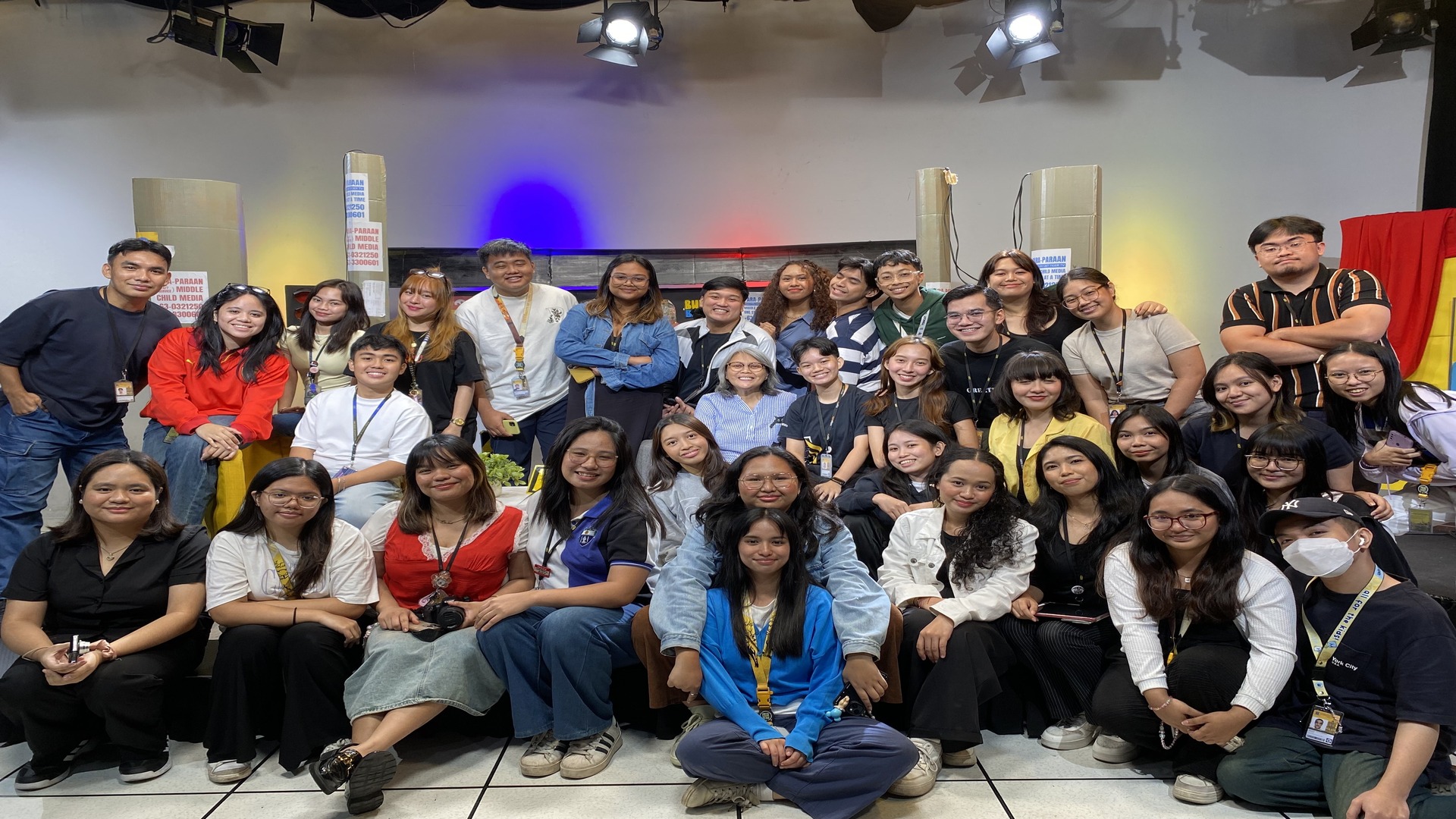Middle Child Media has officially concluded the broadcast of “Para-Paraan,” a dynamic and informative show created especially for Metro Manila commuters, with a focus on Thomasians. It was produced by third-year Communication students from the University of Santo Tomas’ Faculty of Arts and Letters, in line with the academic requirements of their TV Production course. The show was developed under the mentorship of Assistant Professor Faye M. Abugan, MA, a seasoned media professional. The show provided insights into the city’s complex transportation system under a distinctive game-show format that combined education and entertainment.
Each episode followed three Thomasian challengers as they embarked on a race from the University of Santo Tomas to various key destinations across the metro. Their mission was to determine which route was the fastest, most affordable, and most convenient. The show also featured insights from transportation and infrastructure professionals, which shed light on broader efforts to improve commuter experiences in the Philippines. At its core, Para-Paraan aimed to answer a common yet crucial question: “What is the best way to go from Point A to Point B?”
In its pilot episode, challengers Ynigo Diaz, Jake Caraan, and Chelsea Derla took on the journey to the Parañaque Integrated Terminal Exchange (PITX) using different modes of public transport: UV Express and e-jeep, Light Rail Transit, and bus, respectively. The episode also featured expert insights from Ms. Kolyn Gervacio-Calbasa, Senior Corporate Affairs Officer at MWM Terminals, Inc. (PITX), who emphasized the importance of early travel to avoid peak-hour congestion. She also highlighted the direct Light Rail Transit-1 connection to PITX as a game-changing development in Manila’s public transport system.
The second episode saw all three challengers take on the bustling commuter hotspot of Cubao, which is widely known as ‘the center of the universe’ for its complex network of transit options. Expert insights were provided by Mr. Gabriel Go, Head of the MMDA’s Special Operations Group – Strike Force. Mr. Go emphasized the critical role of pedestrian infrastructure in solving Metro Manila’s traffic issues. He noted safe and accessible sidewalks as a top priority to an effective and inclusive transportation system.
For its final episode, Diaz, Caraan, and Derla set out on a mission to reach Bonifacio Global City (BGC). In adding substance to the episode, Para-Paraan welcomed urban planning expert and Assistant Professor Dr. John C. Ong, PhD., who shared valuable insights into BGC’s urban planning and its emergence as a model for sustainable city development. He explained that in a well-planned city, it is essential to clearly identify where people live, work, and access their daily needs.
The executive producer of its third and final episode, Brianna Valdez, wanted to highlight BGC’s sustainable city planning, such as “its walkable streets and organized system,” because she felt it “improves the commuting experience.” While hurdles like heat and time constraints still persisted during the episode’s production, she noted these challenges made the episode feel “more real and relatable,” calling it “reflective of the everyday struggles and wins of student commuters.”
While the three episodes all end with definitive answers to the question of “What is the best way to go from Point A to Point B?,” the decision of supervising producer Dean Manuel Pinza to showcase three different modes of public transportation per episode allowed the show to explore practical, real-life strategies in commuting the metro and highlight the differences in various modes of transportation. Per Pinza, he wanted the show to highlight accessibility in a bustling metro.
Taking the viewer alongside Diaz, Caraan, and Derla’s journeys also gave way for authenticity. While Para-Paraan may seem light-hearted, it also communicated to viewers the challenges of being a commuter in the metro, such as delays, the weather, and the traffic. These glimpses to commuting exemplify the lived experiences of typical Filipinos. For Thomasians who came from outside the metro, these glimpses may provide some comfort because the show proves commuting in the metro is a shared, challenging experience.
What makes Para-Paraan a resonant show for many Thomasians is its focus on the lived experiences of the people who traverse the streets of Metro Manila daily. The show’s head writer, Jannelle Gelito, also made sure to include a jeepney in all of its episodes due to its ubiquitous nature, especially for students. To her, jeepneys are ‘convenient and essential,’ a sentiment that reflects the sense of Filipino identity many commuters associate with the vehicle.
Through these, the show becomes not only entertaining, but also an affirmation of the cultural significance that public transportation brings into the Filipino identity. In doing so, viewers are encouraged to reimagine Metro Manila to its fullest potential: a metro that is accessible, inclusive, and built around the real needs of the people who live in it.
Para-Paraan’s three episodes are available for replay on the Facebook page of UST Tiger TV.



